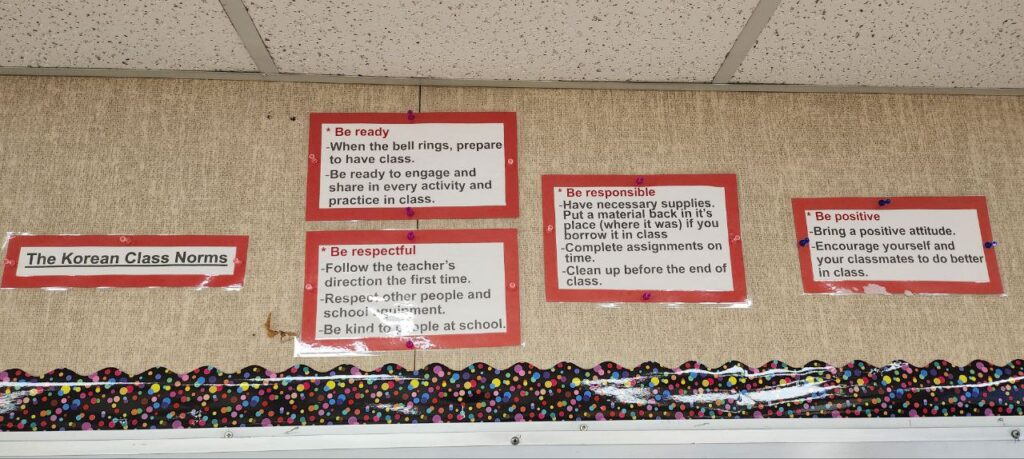
Phase 1: Creating a Coaching Plan
The project’s first phase involved choosing a partner teacher, understanding, and setting expectations for the coaching process. From the simple task of scheduling meetings to aligning coaching goals with the school district’s vision of 21st-century learning skills to improve student engagement, collaboration, and technology integration. Narrowing it down from the district’s overall goal provided a roadmap for planning coaching. ISTE STANDARDS FOR COACHES as guidelines for understanding my role, and the coaching Plan template was a great resource to collaborate with my learning partner teacher to facilitate planning. Also, getting feedback from a PLC with experience in instructional coaching helped me refine the planning to a simpler but more realistic one.
Phase 2: Meeting with a Coaching Partner
When I met with my partner teacher for the first time, I took the initiative to introduce myself, providing background information and addressing her questions about my teaching experiences. The communication established a sense of familiarity and trust, setting a positive tone for our upcoming collaboration. I focused on essential communication skills discussed in class, such as active listening and paraphrasing. As the meeting approached, I sent a reminder outlining our agenda to align our expectations. My partner teacher had a hectic schedule and appeared stressed. Despite these challenges, I actively listened and redirected the conversation to our meeting topics. Her passion for teaching and interest in the Dual Language Immersion program emerged during our discussion, providing an opportunity to connect over a shared vision to enhance student learning. Overcoming her initial anxiety about technology, I presented evidence supporting its positive impact on language skills, aligning it with district goals. I successfully navigated the meeting by practicing effective communication, taking notes, paraphrasing, and maintaining professionalism. Challenges included keeping discussions focused and ending on time due to her numerous topics of interest. Establishing effective communication, building trust, and practicing planning meetings highlighted what I learned from the experience. From the initial meeting, I learned the importance of flexibility and adaptability, as the partner teacher’s busy schedule posed a challenge. Overcoming initial reservations about technology, we found common ground in the shared vision for student learning. Setting meeting norms became crucial to enhancing collaboration and ensuring goal-focused, timely outcomes.
Phase 3: Co-planning a Lesson
Co-planning a lesson was a collaborative effort that required creating a standard for evaluating lesson effectiveness. The Co-planning Learning Template provided a structured approach to assess the lesson’s impact. My partner teacher and I took the UbD approach to build our lesson plan from what we wanted to accomplish. “Co-planning gives those involved the opportunity to collaborate on the creation of a lesson or unit. That collaboration allows for learning experiences to be reimagined and made more impactful while giving the coach the ability to provide support as a learning designer (McBride, 2021).” As stated in the ISTE STANDARDS FOR COACHES 4A: Collaborate with educators to develop authentic, active learning experiences that foster student agency, deepen content mastery and allow students to demonstrate their competency. Engaging in this process with the partner teacher allowed for a deep understanding of her teaching style and preferences. The observation of her class provided valuable insights into the dynamics of her classroom, paving the way for a more practical co-planning experience. At the co-planning stage, we focused on getting the desired result that aligns with a shared goal of enhancing participation and 21st-century learning skills, such as collaboration through integrating technology.
Phase 4: Improving a Lesson
The collaborative effort to improve a lesson, reflecting on the lesson plan based on the Learning Design Matrix, ensured that the lesson met standards and effectively leveraged technology. Again, getting feedback and a second eye from PLCs was valuable in refining the lesson further. Responding to the feedback, I reflected on improvement areas and made adjustments. After observing my partner teacher’s class, we met to discuss how the confidence level to speak out among students varies. We needed to improve the lesson plan by adding a mini-project to engage students in active learning and encourage creativity.

Conclusion:
Going through each phase of the project, I learned the importance of aligning a shared goal with overarching district goals, effective communication, and collaborative planning. Most of all, I learned that navigating the complexities of coaching requires adaptability, active listening, and a commitment to continuous reflection and improvement. There were challenges like the Smartboard not connecting to my laptop and an internet connection issue on the day of the lesson; however, we navigated and worked through the problem together. We even considered student’s input and ideas to modify the project at the time. I truly enjoyed the class time spent with students. I am waiting for our next meeting to evaluate the lesson together. The Edtech coaches have a unique role, as stated in the ISTE STANDARDS FOR COACHES: 4.1 Change Agent, 4.2 Connected Learner, 4.3 Collaborator, 4.4 Learning Designer, 4.5 Professional Learning Facilitator, 4.6 Data-Driven Decision-Maker and 4.7 Digital Citizen Advocate to build and implement lessons integrating technology. During the project phase, I had opportunities to apply what I learned from the class and completed the sub-teacher certification process. Also, getting to know the staff and teachers and feeling like part of the school community was a great experience.
Reference
McBride, Ashley. The Edtech Coaching Primer: Supporting Teachers in the Digital Age Classroom, International Society for Technology in Education, 2021. ProQuest Ebook Central, http://ebookcentral.proquest.com/lib/spu/detail.action?docID=6683479.


